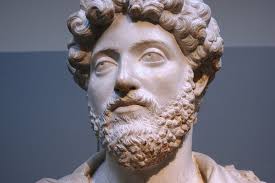Italian philosophy’s always been tied to how we live, think, and find what matters. One major part of it is Stoicism. It started in Greece, but Rome made it its own, especially thanks to people like Seneca. He changed how Italians (and others) thought about life, being good, and knowing yourself. This idea of being strong inside, doing what’s right, and using your head has stuck around in Italian thinking.

Seneca: Stoicism’s Roman Voice
Seneca, who was born in Spain but grew up in Rome, is like the poster child for Roman Stoicism. He was a thinker, leader, and advisor to Emperor Nero. Seneca wrote about how to live well, handle tough times, and not let your feelings control you.
He thought:
Life’s short, so don’t waste it.
Stuff like money or fame isn’t up to you, so don’t sweat it.
Being good—living by reason and nature—is the only thing that really matters.
His writings, like his Letters to Lucilius, are still great to read if you’re trying to live a good life in a crazy world.
Stoicism in Italy
Italy’s seen a lot over time, and it keeps coming back to Stoic ideas, sometimes without even realizing it. Stoicism puts importance on being disciplined, not overdoing things, and being clear about what’s right. You see this in:
The calm way Italians deal with Catholicism.
Renaissance humanism’s mix of reason and doing good.
La dolce vita, which isn’t just about having fun. It’s about finding beauty, keeping things simple, and staying in control.
The Renaissance: Stoicism Returns
During the Italian Renaissance, thinkers got interested in old ideas again. Stoicism quietly had an impact on discussions about what’s right, politics, and being free.
People emphasized being human and making yourself who you want to be, similar to Stoic ideas about being in control.
Listen to the new song of Andrea Pimpini
Someone admired the Stoic ability to handle whatever life throws at you.
Even art, the calm faces in Renaissance paintings show how Stoicism values keeping your emotions in check.
Modern Times
Even now, Italian thinkers have used Stoic ideas.
A theorist wrote about being pessimistic with your brain, optimistic with your actions. That’s similar to Stoicism: seeing things clearly but still being strong.
Another person explored how we make sense of things and deal with not knowing what’s going to happen. That’s also a Stoic idea in today’s world.
Now, Stoicism’s less about being distant and more about staying strong when things change and get complicated.
Stoicism Today
These days, with all the stress and information, many Italians are going back to Stoicism to find clarity.
Books by modern people are making Stoicism easy to understand again. People are getting more interested in practical ways of thinking, staying present, and controlling their feelings which aligns to Stoic values.
In Italy’s slow food movement, its focus on skill, and even its traditions, you can see a modern take on Stoicism: valuing what’s important, living now, and not worrying about what you can’t change.
Conclusion
The Stoic way of thinking that started with Seneca is still around in Italian thought and culture. It reminds us that life is unpredictable, but we get to choose how to react. If you’re dealing with problems, trying to focus, or just want to be better, Stoicism offers some tools, based on old wisdom.
Sareena Bilal is a versatile and passionate content writer with a flair for storytelling across diverse domains, including economics, gaming, technology, travel, and dining. With a strong foundation in computer science and a proven record of crafting compelling content for global audiences, she brings both technical insight and cultural sensitivity to every piece she writes. Sareena currently volunteers as a luxury features writer for La Haute D’Arabie, where she produces immersive content on elite travel, wellness, and fine dining.
Her background as a machine learning engineer and software developer gives her a unique edge in breaking down complex tech topics into engaging narratives. Whether she’s writing about cutting-edge AI or reviewing the latest gaming trends, Sareena combines analytical depth with creativity and clarity. She is a self-motivated professional who thrives in remote, flexible environments and is excited to contribute her writing expertise to projects that inform, entertain, and inspire. Sareena’s work is not just about words—it’s about creating lasting impact through meaningful content.